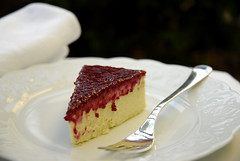 I bought a box of chocolate cereal and it didn’t taste good; I wanted chocolate but instead I got fibers. Sometimes I miss being in the US for the multiple choices, in this case of cereals! When it comes to breakfast cereals I can relate to Jerry Seinfeld; I love them and care for diversity! I enjoyed going to the market to find shelves packed with all kinds of cereals... One day I could go healthy with honey, dried fruits and fibers; other times I could go indulgently with loads of sugar, chocolate, marshmallow … and nuts with so many options! (Check out this list of breakfast cereals!) But here in Brazil, besides not having many choices, now they’re screwing up with the few cereal boxes we have. I read that the current trend is to make cereal healthier by reducing the amount of sugar and adding whole grains. Thanks a lot cereal killers! I know it was first invented so people could have a healthier first meal but they started adding sugar, chocolate, other flavorings and cereal became also a treat we love. Now they can’t take that away from us! Check out the history of breakfast cereal and see how things evolved…
I bought a box of chocolate cereal and it didn’t taste good; I wanted chocolate but instead I got fibers. Sometimes I miss being in the US for the multiple choices, in this case of cereals! When it comes to breakfast cereals I can relate to Jerry Seinfeld; I love them and care for diversity! I enjoyed going to the market to find shelves packed with all kinds of cereals... One day I could go healthy with honey, dried fruits and fibers; other times I could go indulgently with loads of sugar, chocolate, marshmallow … and nuts with so many options! (Check out this list of breakfast cereals!) But here in Brazil, besides not having many choices, now they’re screwing up with the few cereal boxes we have. I read that the current trend is to make cereal healthier by reducing the amount of sugar and adding whole grains. Thanks a lot cereal killers! I know it was first invented so people could have a healthier first meal but they started adding sugar, chocolate, other flavorings and cereal became also a treat we love. Now they can’t take that away from us! Check out the history of breakfast cereal and see how things evolved…The American breakfast was composed of eggs, bacon, sausage and beef, with very little fiber. As a result, many people suffered painful and debilitating gastrointestinal disorders. That was the incentive to invent some kind of breakfast cereal. The first who did it (in 1863) was James Caleb Jackson, operator of the Jackson Sanitorium in Dansville, New York. His heavy bran nuggets that needed soaking overnight before they were tender enough to eat, called Granula, never became popular. The next generation of breakfast cereals was considerably more convenient, and, combined with clever marketing, they finally managed to catch on. In 1877, John Harvey Kellogg the operator of the Battle Creek Sanitarium, in Michigan, invented a ground up, oat and corn meal biscuit for his patients suffering from bowel problems. The product was initially also named Granula, but changed to Granola after a lawsuit. His most famous contribution, however, was an accident. After leaving a batch of boiled wheat soaking overnight and rolling it out, Kellogg had created wheat flakes. His brother Will Kellogg later invented Corn flakes from a similar method, bought out his brother's share in their business, and went on to found the Kellogg Company in 1906.
A patient at the Battle Creek Sanitarium, Charles William Post, also made contributions to breakfast cereals. After his 1893 visit, he started his own sanitarium and developed his own coffee substitute, Postum. In 1897, Post invented Grape Nuts and, coupled with a nation-wide advertising campaign, became a leader in the cereal business.
By the 1930s, the first puffed cereal, Kix was on the market. Soon shredding was introduced, yielding Shredded Wheat. Starting after World War II the big breakfast cereal companies increasingly started to target children. Sugar was added, and the once-healthy breakfasts looked very different from their fiber-rich ancestors… but so delicious!





2 comments:
even the Oreo cereal ?
We don't have Oreo cereal here...! Just the basic stuff, with corn, chocolate, rice, that fruit colorful one. But they are reducing the sugar and adding fibers on some of those ones, as I said. And we have a little more options on the healthier stuff, like those with lots of fibers and many brands of granola. That's serious! I even met someone who travels back to Brazil with cereal boxes in the baggage!
Post a Comment